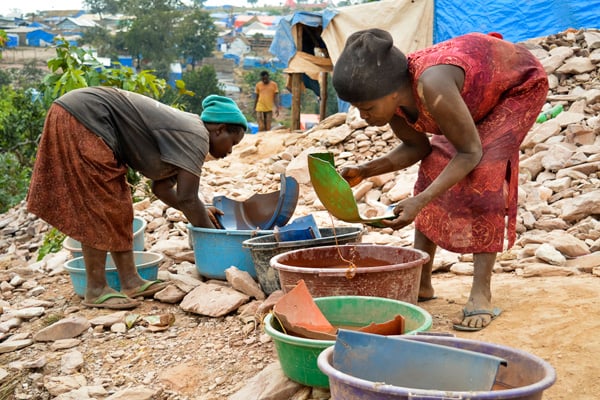Govt tightens noose on banned fishing method

Women sell mukene (Silverfish) at Kiyindi Landing Site in Buikwe District on February 24, 2024. PHOTO/DANIEL M SSENFUMA
What you need to know:
- In a February 20 statement, Ms Adoa announced that the government had banned the use of the fishing method and recommended the use of chota-chota (scoop method) on all water bodies across the country.
The State Minister for Fisheries, Ms Hellen Adoa, has said the government will not allow the banned “hurry-up” fishing method being used to catch silver fish (mukene).
In a February 20 statement, Ms Adoa announced that the government had banned the use of the fishing method and recommended the use of chota-chota (scoop method) on all water bodies across the country.
Ms Adoa said the use of the “hurry-up” method is destructive because it catches all fish species, including young Nile Perch at once and in large numbers thus depleting the lakes.
However, the implementation to enforce the chota-chota fishing method has since been misinterpreted by a section of fishermen, who claim that banning of the “hurry-up” fishing method is equivalent to banning of fishing mukene.
This has, however, forced many fishermen to abandon mukene fishing business, while others have relocated to neigbouring Tanzania where the fishing method is still thriving.
The chota-chota fishing method is practiced mainly in shallow waters, whereby fishermen make the net round and scoop the mukene on the surface of the water. The “hurry-up” method, involves the use of a series of nets joined together are cast about five metres down the water. They are then forcefuly pulled out of the water. However, this method allows the trapping of several other young fish species, not only the targeted mukene.
In an interview on with the Monitor on Tuesday, Ms Adoa urged the fishermen to embrace the chota chota method that was being used before the destructive “hurry-up” method was introduced.
“We are not ready to yield to any pressure to bring back the fishing method [hurry up) we banned. Those who cannot embrace chota-chota method, let them try another business, not mukene fishing,” Ms Adoa said.
Mr Godfrey Ssenyonga Kambugu, the chairperson of the Association of Fishers and Lake Users of Uganda (AFALU), said the fishermen who are agitating for the reinstatement of the “hurry-up” fishing method are not their members.
“Those are the very people who have been engaging in illegal fishing. What they are proposing [hurry up fishing method] is destructive as it traps different young fish species,” Mr Kambugo said.
Mr Kenneth Mulati, a mukene fisherman at Njeru in Buikwe District, said the chota-chota fishing method is only sustainable in very shallow waters in some lakes, but not on River Nile where the water flows faster.
Mr Yasin Mugerwa, a fisherman in Kalangala District, said the persistent use of the “hurry-up” method is the reason Nile Perch stock has drastically reduced in the lake.
“Had the government discovered earlier that the “hurry-up” method is a destructive one, our fish stocks couldn’t have dwindled to the current levels,” he said.
To salvage the dwindling fish stocks, the government, under the latest guidelines, also banned fishermen from trapping mukene at a distance that is not exceeding 2kms from the lake shores. The fishermen are also required to fish mukene for only 15 days every month to avoid depleting the fish species.
Fish catch
In Uganda, small fish species contribute between 60 and 70 percent of the total fish catch on Uganda’s big lakes of Victoria, Albert and Kyoga, according to the National Fisheries Resources Research Institute.



